Hytera Authorised Dealer in Ireland
 22nd Feb 2022
22nd Feb 2022
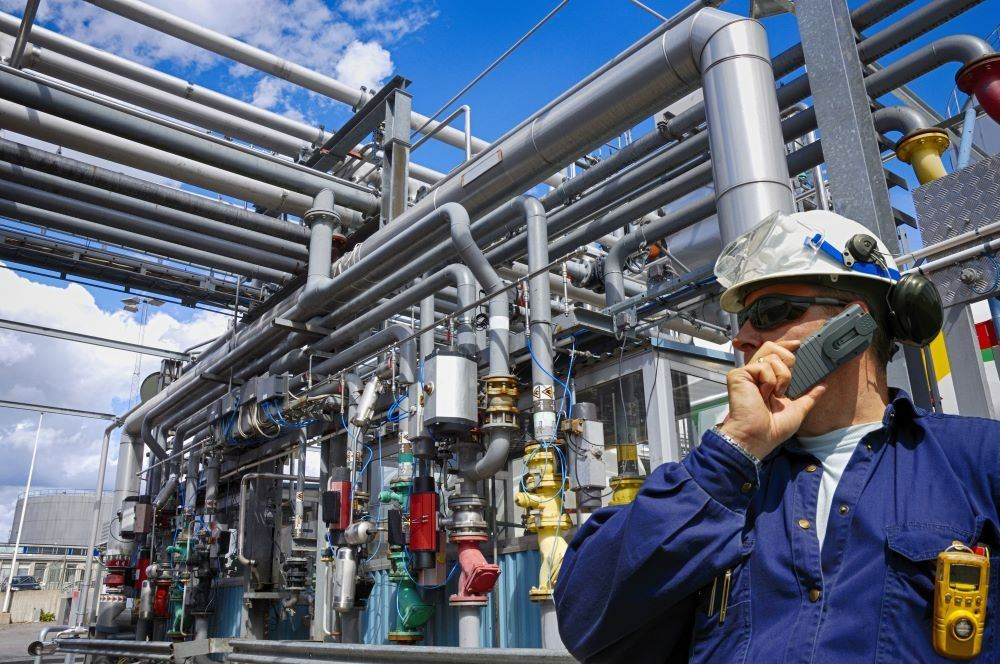
 Released On 29th Mar 2022
Released On 29th Mar 2022
ATEX two-way radios and accessories are mandatory requirements to keep workers safe in certain environments, but why? Here's our guide to ATEX requirements for two-way radios in hazardous areas, plus our latest recommendations for ATEX radios from Motorola, Hytera and Icom.
The word "ATEX" comes from the French phrase, ATmosphères EXplosives, which is easily translated to "explosive atmosphere".
The ATEX approval process is the result of an EU Directive, introduced in 2003 to control explosive atmospheres. It requires that electrical equipment such as two-way radios meets rigorous safety standards in hazardous areas, where a spark could react with gases in the air to cause an exposion. ATEX-approved equipment is also known as being "intrinsically safe".
A variety of air-borne substances and chemicals, mixed in the right proportions, could potentially create an explosive atmosphere. These include flammable gases, vapours or even combustible dust particles. A small spark from an ignition source (such as a two-way radio) could easily cause an explosion when exposed to these substances.
"Intrinsically safe" is a term used to describe equipment that's specially designed to be safe in environments where there's a risk of fire or explosion. Think of a fire needing three things to start: fuel (like gas), oxygen (in the air), and a spark or heat (like a match, or an overheating electrical item). Intrinsically safe devices, such as radios built to ATEX compliance standards, are made in a way that they can't produce enough heat or sparks to ignite a fire or explosion, even if there's fuel and oxygen in the atmosphere.
Intrinsically safe radios are built with limits on how much electrical and thermal (heat) energy they can release. This means they're safe to use, even if they're used in places where there's flammable gas or other risky materials.
Intrinsically safe, ATEX-approved radios are manufactured to very stringent requirements to reduce or eliminate the risk of generating even the tiniest spark. They must also limit the heat produced by the device. From the radio-casing to the batteries they use, everything is constructed with safety in mind.
Not all two-way radios meet ATEX standards, though many leading manufacturers have ATEX-approved radios in their ranges, including Motorola, Hytera and Icom. ATEX two-way radios contain many of the enhanced features you’d expect from a professional radio system, and they'll usually include a number of safety features, such as Man Down, Lone Worker, Transmit Interrupt and an Emergency button.
There are many situations where radios are critical to effective operations, yet standard two-way radios could make a hazardous environment even more dangerous.
Intrinsically safe, ATEX handheld radios, batteries, microphones and PTT adapters and headsets would be mandatory for safe communication in potentially volatile environments like these. We have all these items in stock and can advise you on the most appropriate ATEX accessories.
Shop for:

Hazardous areas differ as to the frequency and duration of risk present in the form of flammable gases or dust materials. Different ATEX zones therefore denote the type and level of risk in an area. ATEX-approved radio equipment must comply with the ATEX zone in which it is intended for use, and be documented appropriately, too. The ATEX zones and their definitions are:
ATEX radios are primarily recognised by their deployment zone, but Temperature classes, consisting of 6 categories (T1 to T6), denote the heat levels in which a product may be used.
Browse the full range of ATEX-approved equipment from RadioTrader
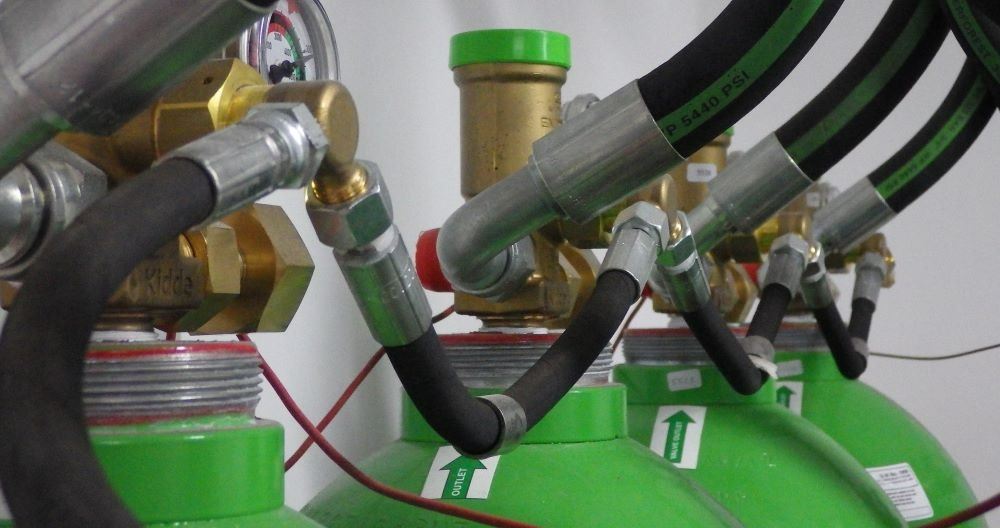
We recommend these ATEX radios from Motorola, Icom and Hytera:
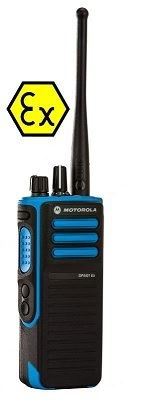 From Motorola's innovative Mototrbo range, the DP4401 Ex is a class-leading ATEX-certified radio that offers exceptional communication in dangerous working environments. It operates in extreme temperature conditions ranging from -20°C to +55°C, with an IP67 rating for total protection against water and dust ingress.
From Motorola's innovative Mototrbo range, the DP4401 Ex is a class-leading ATEX-certified radio that offers exceptional communication in dangerous working environments. It operates in extreme temperature conditions ranging from -20°C to +55°C, with an IP67 rating for total protection against water and dust ingress.
The DP4401EX also features a range of specifications to promote the safety of workers in industries such as oil, gas, mining or chemical refineries.
View full technical specs or buy the Motorola DP4401EX ATEX radio.
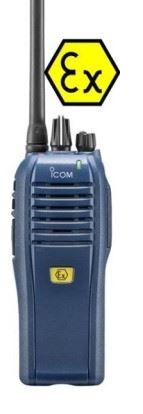 Icom has some excellent ATEX equipment, and we highly recommend you take a look at the IC-F3202DEC (VHF model) and the IC-F4202DEX (UHF model). Its ATEX specifications make it ideal for oil, gas; chemical, mining and marine industries.
Icom has some excellent ATEX equipment, and we highly recommend you take a look at the IC-F3202DEC (VHF model) and the IC-F4202DEX (UHF model). Its ATEX specifications make it ideal for oil, gas; chemical, mining and marine industries.
As you'd expect, these models are water-tight and dust-tight to IP67 standards, and provide a host of worker safety features such as Man Down and Lone Worker. The IC-F3202DEX and IC-F4202DEX have a range of programmable dPMR features.
View full technical specs or buy the Icom IC-F3202DEX or Icom IC-F4202DEX
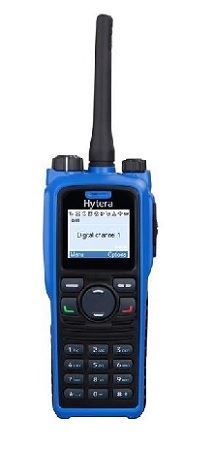 Hytera PD795Ex ATEX Radio with GPS
Hytera PD795Ex ATEX Radio with GPSThe Hytera PD795Ex is an ATEX-approved handheld digital radio, whose ATEX approval meets Ex ib IIC T4 (Ex ib D21 T4 IP6X) standards.
The PD795Ex has a market-leading, robust design with a full keypad and high resolution, LCD display. It's packed with enhanced features, including integral GPS. This means that the PD795Ex can send location data to a dispatcher system and use geo-fencing, radio localisation and GPS tracking to improve worker safety.
Other standard safety features built into the PD795Ex include Lone Worker, Man Down and Emergency Mode.
View full technical specs or buy the Hytera PD795Ex
RadioTrader provides free and generous advice for choosing, buying and installing ATEX radio systems in your business or organisation.
Call us on 1800 936374 or send our contact form below for more information.
 22nd Feb 2022
22nd Feb 2022
 15th Sep 2021
15th Sep 2021
Stay up to date with the lastest from RadioTrader